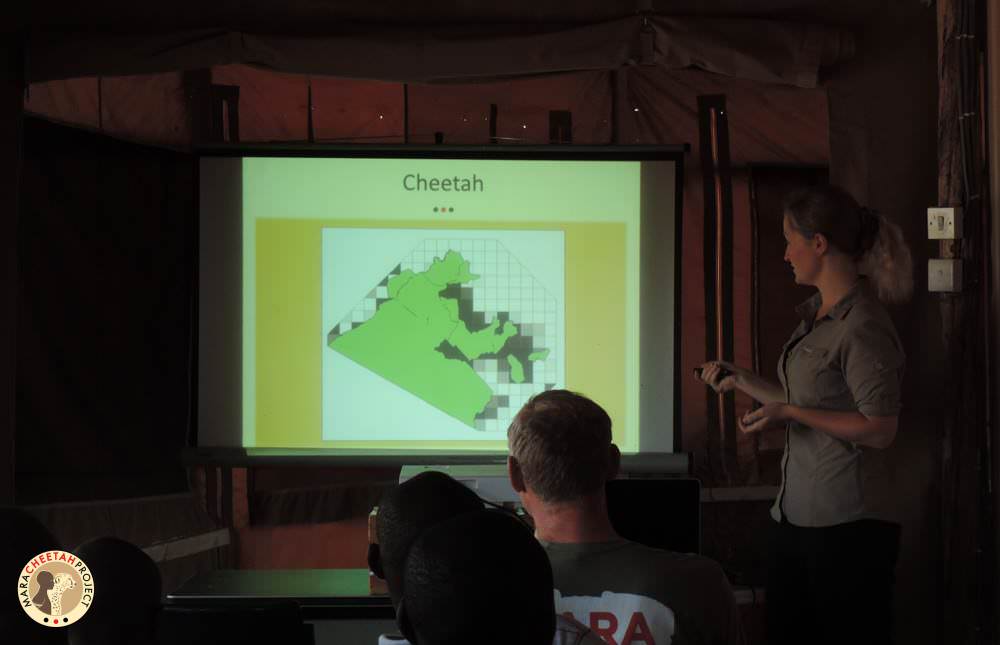 Emily giving her presentation with MEP CEO Marc Goss in the audience.
Emily giving her presentation with MEP CEO Marc Goss in the audience.
On July 31, Mara Elephant Project CEO Marc Goss attended a presentation about multi-species habitat use and distribution outside of protected area in the Maasai Mara landscape given by a Mara Cheetah Project student Emily Madsen. Emily is focusing her M.Sc. thesis on assessing distributions of wildlife outside of the protected areas and in a relatively short amount of time, two months, she was able to put together a well thought out study using data from interviews with the local community to map species’ habitat use and distribution outside of the protected areas to help with the creation of corridors and conservancies.
“Wildlife migratory corridors connect core habitats and are critical for species’ survival and long-term viability of ecosystems.” – from the study Wildlife Migratory Corridors and Dispersal Areas
This research is especially important because of the updated picture it presents. The data being used currently for determining elephant corridors in the Mara is from Dr. Joyce Poole’s Mara Ecosystem Connectivity Report from 2014. Mara Elephant Project, along with partners Save the Elephants, Kenya Wildlife Service and Elephant Voices contributed to this ground-breaking report that indicated the increased fencing and settlements in the area along the Sekenani road is cutting off movement of key species. The Sekenani road is the main thoroughfare through the Mara and there is an 82-kilometer expansion due to begin soon that runs between Narok and Sekenani.
“The short story is: if we don’t allow wildlife, and elephants in particular, the space they need to thrive, we are asking for trouble. We risk killing the goose that currently lays the golden egg. If elephants and other animals disappear, so will the tourist that come to see them and the revenue that Narok County and its inhabitants depend on.” – Elephant Voices
Around this same time, Kenya Ministry for Environment and Natural Resources launched a document entitled Wildlife Migratory Corridors and Dispersal Areas. In this document, Kenya is recognizing the importance of sustainable resource use, reducing biodiversity loss, and maintenance of ecosystems processes and securing wildlife dispersal areas and migratory corridors features prominently as one of the economic and social pillars in this plan. They plan to address the impacts on wildlife dispersal areas and migratory corridors by developing and expanding the current conservation connectivity framework, identify and secure wildlife dispersal areas and migratory corridors, promote integrated land use for special planning, promote community participation, review current policies and legislation, implement management of conservation connectivity, and monitor and evaluate dispersal areas.

MEP collared elephant Chelsea with her new baby.
While this study is extremely important to acknowledge, something more immediate needs to be done in the Mara to support building underpasses for wildlife along the Sekenani road. MEP plans to share our collared elephant data with key partners namely, the Narok County Government, so that the underpasses are built where they should be.


